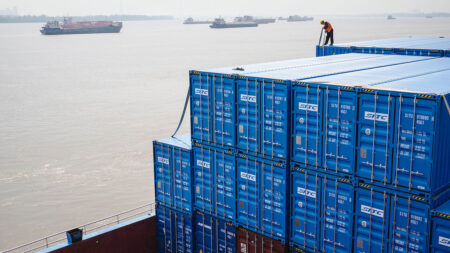America’s import duties have been on a significant upward trajectory, signaling a notable shift in the country’s trade policy. On August 1st, new tariffs will be implemented on goods from over 20 nations, including members of the European Union, unless these countries manage to negotiate favorable trade deals before the deadline. This move is part of a broader strategy by the United States to recalibrate its trade relationships and exert more control over international markets. The implications of such tariffs could not only strain diplomatic relations but also affect various sectors reliant on imports.
The announcement by President Donald Trump on July 14th further underscores the urgency and seriousness of the situation. Trump indicated his intention to impose “secondary tariffs,” which would entail an astonishing 100% levy on products from countries that continue to engage commercially with Russia, particularly if a peace agreement regarding the ongoing conflict in Ukraine is not reached within a 50-day window. Such statements, while creating immediate ripples in the market, should be approached with caution. Historically, President Trump has been known to retreat from harsh rhetoric if it threatens to destabilize financial markets, showcasing a tendency for policy adjustments in response to economic pressures.
Despite the unpredictable nature of political statements, the data reflects a tangible shift in America’s trade policies. The average effective tariff rate has skyrocketed to 10%, a dramatic increase from the mere 2.5% observed just a year ago. This steep rise illustrates a commitment to protecting domestic industries but raises concerns about retaliation from affected nations and the risk of trade wars escalating beyond diplomatic control.
As this fiscal landscape evolves, industries across the board are preparing for changes that could disrupt established supply chains. Manufacturers that rely on imported raw materials and components may find their operational costs soaring, often resulting in increased prices for consumers. The automotive sector, technology firms, and even agricultural producers could feel the pinch of these tariffs in various ways. A ripple effect could ensue, with American consumers and businesses alike grappling with higher prices and limited choices in the market.
In addition to the economic ramifications, there are broader geopolitical considerations to consider. The imposition of tariffs inevitably strains international relations, particularly with allies who may be caught in the crossfire of America’s trade disputes with more direct adversaries. The dynamics of the European Union are particularly relevant here, as member states have significant economic ties with both the U.S. and other markets affected by these tariffs. As such, coordination among European nations is vital to mitigate the challenges posed by heightened import duties.
The unfolding situation demands close attention from economists, policymakers, and industry leaders alike. Decision-makers must navigate these turbulent waters while balancing domestic priorities with the realities of global interdependence. Solutions will likely require a combination of negotiation strategies and innovative approaches to sustain trade flows without sacrificing economic stability.
In conclusion, rising import duties signal a pivotal moment in U.S. trade policy, characterized by uncertainty and potential for conflict. As tariffs increase, both the immediate and long-term effects will require careful monitoring and strategic responses from all stakeholders. Whether through successful negotiations or a recalibration of trade relationships, the ongoing situation will inevitably impact both domestic and global markets, setting the stage for a new era in international commerce.









